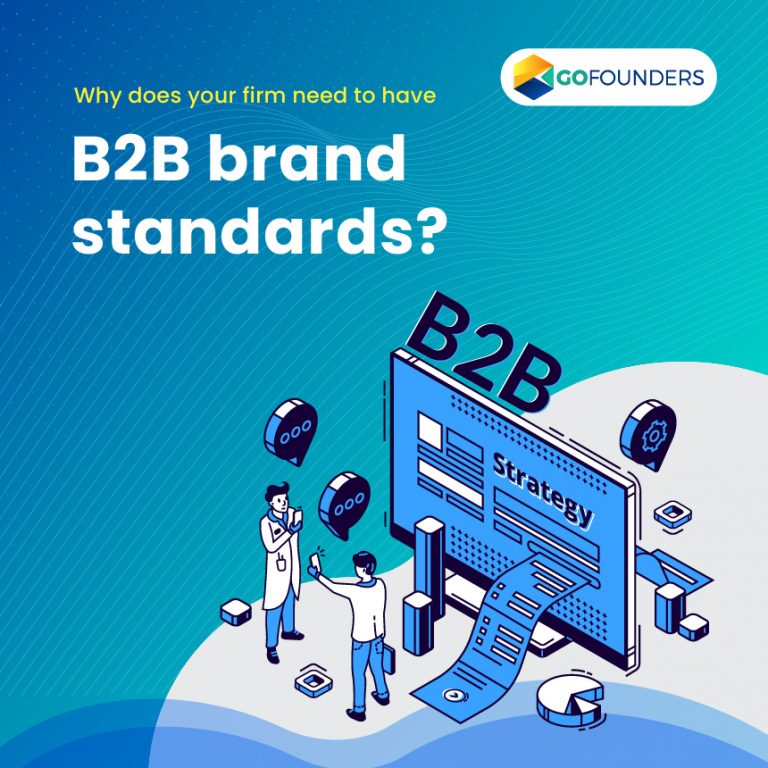
A brand has developed to mean significantly more than a logo. Branding starts with the consistency of an introduction that turns into the identity of an organization. Past this, it speaks to a steady worth framework that an organization presents to the world, and that supposedly is that organization’s method of getting things done. On this branding stepping stool, the challenge is to move beyond the realistic graphic symbols and metaphors to get to the more intricate cultural consistency that clients and potential customers perceive and value.
B2B Brand standards and principles are a bunch of rules and guidelines for the colours; logo, photography and graphic elements; logo specs; text styles and messaging that involves your brand image. They’re the magic that binds your brand image together and helps to create and ensure your company’s brand identity.
1. Your Brand Statement:
Your Brand Image Statement is a clear reflection of your organization and so provides an excellent prologue to your guide. A fruitful assertion should be exceptional, descriptive, and concise. The essential objective is to explain what you do and how your association should see. It could be helpful to incorporate brief areas enumerating “whom we serve”, “our qualities” and “how we are unique.”
2. Color and Shading Scheme
Keeping a reliable shading palette couldn’t be more critical. All blues are not equivalent. Having an expert rundown that incorporates your essential Pantone, CMYK, HEX and RGB qualities will demonstrate invaluably. Subsequent and Resulting pages in the B2B brand guide can likewise explain an auxiliary or tertiary palette, highlight colours, and tints.
3. Textual styles
Once more, standardization is vital. In what capacity should the textual styles and font weights (bold, regular, and light) be applied to headings, subheadings, and body duplicate? What standard can textual style option use when the essential font isn’t accessible?
4. Logo use
Your logo was likely with a couple of explicit varieties. It is something to be thankful for. The graphic designer has painstakingly thought how the logo will work in different sizes and on other foundations, both with and without a slogan or symbol.
It’s essential to show these affirmed final versions of the logo in the brand manual for plainly speak to your B2B branding. Creating and utilizing different conflicting varieties is to be dodged no matter what, as numerous iterations can undoubtedly sloppy your logo’s acknowledgement. The Ultimate Tips to Build B2B Software Startup Marketing Plan
6. Implementation and Usage
When all your brand components have determined, it’s an ideal opportunity to grandstand what they look like across an assortment of dedicated, real-world applications. Your guide should show how your branding has been (or can be) applied across a variety of media. It can incorporate your website design, online advertising, exhibit displays, email marketing, pamphlets, reports, business cards, online social media profiles and so on.
7. Emphasizing Visuals
In a perfect world, your branding guide ought not to look or read like a coursebook. Brief particulars should endorse by visual models at whatever point conceivable. A very much planned guide won’t only demonstrate helpful to other designers yet will be available to employees across your association.
8. Brand Consistency Builds Trust
A smart and thoughtful B2B brand technique will position your organization to pull in new leads. In adhering to your brand image guidelines, you will give a predictable encounter to your employees and clients alike. This consistency over the long haul builds trust, which like this will help convert new leads into long haul business connections and relationships.
Final Note:
A well-crafted B2B brand standards are essential to ensuring your organization’s B2B brand standards consistency over the long haul. Regardless of whether you have staff turnover or end up outsourcing a particular design venture, your brand guide will help keep everybody moving in the right direction.
Numerous organizations contribute a lot of both human and capital assets into building up a unique brand identity, to see them diluted along the way. Here’s why brand norms and standards are so significant, and why you should actualize them within everything that you do.



Mario Sousa
3 years ago